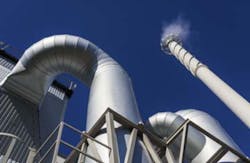The U.S. Environmental Protection Agency (EPA) issued a final rule designed to create a consistent national framework to ensure the safe and effective deployment of carbon capture and sequestration (CCS) technologies. CCS technologies allow carbon dioxide to be captured at stationary sources—like coal-fired power plants and large industrial operations—and injected underground for long-term storage in a process called geologic sequestration.
The new rule clarifies that carbon dioxide streams captured from emission sources, injected underground via UIC Class VI wells approved for the purpose of geologic sequestration under the Safe Drinking Water Act, and meeting certain other conditions (e.g., compliance with applicable transportation regulations), will be excluded from the EPA’s hazardous waste regulations. Further, the rule clarifies that carbon dioxide injected underground via UIC Class II wells for enhanced oil recovery (EOR) is not expected to be a waste management activity.
READ ALSO: EPA Renewable Fuels Proposal Seeks Comment on ‘E10 Blend Wall’
The EPA concluded that the careful management of carbon dioxide streams under the specified conditions does not present a substantial risk to human health or the environment. The EPA expects its determination will help provide a clear pathway for the deployment of CCS technologies in a safe and environmentally protective manner while also ensuring protection of underground sources of drinking water.
The rule is complementary to previous EPA rulemakings, including Safe Drinking Water Act regulations that ensure the Class VI injection wells are appropriately sited, constructed, tested, monitored, and closed.
The EPA is also releasing draft guidance for public comment that provides information regarding transitioning Class II wells used to inject carbon dioxide for oil and gas development to Class VI wells used for carbon capture and sequestration. The comment period for the draft guidance is 75 days.
More information on the final rule can be found here.
More information on the Geologic Sequestration of Carbon Dioxide can be found here.
To read the draft guidance on transitioning from Class II to Class VI wells, go here.


